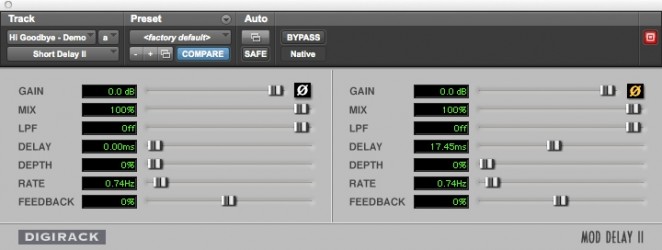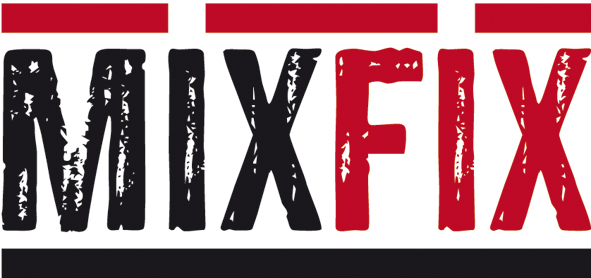Australian Musician presents our next ‘before and after’ MIX FIX artist and song, Frank Dixon’s “Hi Goodbye”.
Mix Fix: Frank Dixon – Hi Goodbye
Artist: Frank Dixon
Genre: Pop
Location: Melbourne, Australia
Song Title: Hi Goodbye
Members: Frank Dixon – All composition, performance, vocals and recording.
Song Buy Link: Hi Goodbye https://itunes.apple.com/au/album/hi-goodbye/id979021998?i=979022001
Hello World EP https://itunes.apple.com/au/album/hello-world/id979021998
Website: http://www.frankdixon.com.au/

The year was 1996 and the spare room in my parent’s inner suburb house was a fully decked out home recording studio consisting of my step dad’s 4 track Tascam recorder, his Roland 707 drum machine and my DOD guitar multi FX pedal. I was the luckiest 15 year old in my school! Imagine the possibilities? A few layers of guitars (if I bounced tracks), a drum beat and some fx! Oh, and let’s not forget the $30 Phillips microphone, for vocals.
Flash forward almost two decades to another Melbourne home. Frank Dixon, a 16 year old singer/songwriter and producer is working around the clock to complete his debut EP. When I heard Frank’s demos I was blown away, and maybe a little jealous. What this then 15 year old artist had created using Logic Pro on his MacBook in a matter of months is really quite amazing.
Like many self produced tracks, the composition and production in Hi Goodbye is very strong and a good mix will help it to connect with the listener. Frank’s rough mix (as heard in the A/B video) was a great starting point and guide for the final.
Why remix the song?
Frank: “Getting a great mix on the track Hi Goodbye was definitely needed to make sure all the elements, (and there were a lot of them), came through nicely without competing with the others. Simon Moro was absolutely fantastic at achieving this – the result was an easy listening track where it needed to be, and an energetic and groovy song during the choruses.”
One of the first things I do when approaching a mix is work out the macro elements of the song. Broadly speaking, to me, Hi Goodbye consisted of: The lead vocal, glitchy synth and light percussion (Verses) and then strong/deep percussion, lead vocals and backing vocals, peppered with a high synth (Choruses).
Once I work out these macro elements, I begin to micro balance. For example, the ‘backing vocals’ on a macro scale, is a micro balance of the multiple tracks of backing vocals. The percussion on a macro scale, is a micro balance of (in this case) many layers of percussion and drum parts.
When the micro balancing is complete, the individual tracks that make up each macro element can be sent to groups for macro mixing – all backing vocals up, all percussion down and so on. Mixing in this way can help avoid getting stuck in the minutia of a song, and to stay in the emotional headspace.
Reverb
When listening to the vocal reverb in Frank’s mix of the song, I could hear that he was going for an ambient and strong vocal sound. When designing the reverbs for my mix, I kept this in mind opting for a fairly restrained use of the effect. I generally wanted to float the vocals just on top of the instruments.
Reverb can be used to position a sound forward or backward on the sound stage. Imagine an actor standing on a stage. The absence of reverb (dry) puts the actor right at the front of the stage whereas increasing the amount of reverb (wet) moves the actor to the back of the stage. You can use reverb as a tool to create space in your mixes by positioning sounds front and back to help avoid sounds fighting for the same space. Imagine if the whole cast tried to stand front and centre on a stage! They would be falling over each other fighting for space.
In Hi Goodbye Frank’s lyrical tag at the end of the choruses is “I’m over you”. For that line, I muted the reverb on his vocal, bringing it right out the foreground, in front of all the other sounds. Have a listen to this part of the song at ~02m:11s. How does this vocal effect change the emotion/importance around that line?
I used my go-to Lexicon 224 and EMT 140 UAD plugins for the reverb on this song.
Bass
I experienced the bass’ role in this song as two things: gentle ‘melodic percussion’ in the verse, and an invisible foundation in the choruses. That is, the bass plays a supporting role in this song, rather than a focus-pulling lead role.
In Frank’s demo he chose an upright bass sample. While I liked the choice of instrument, the sound wasn’t quite fitting in my opinion. Using the MIDI file from Logic, I created a new bass sound in Pro Tools. My sound was a blend of an upright bass for the ‘attack’ in the verses, and a ‘sub’ style analog bass sound for the depth and foundation throughout. By blending these two sounds, I was able to get strong percussive definition from the upright bass sound and smooth low-mids and lows with the analog bass sound. I used sounds from Native Instrument’s Komplete in the Kontakt plugin to do this.
Drums & Percussion
This song has many layers of percussion and the micro balance of these elements was key to getting the mood right. As an example, during the verses, I turned the shaker up as it was playing 8th notes, which helped keep a sense of forward momentum. Experiment with micro balancing to help understand how levels alone can affect a song’s mood.
The punch of the percussion was immediately improved by addressing the issues with the original bass sound, particularly in the muddy low mids. By tightening up the low mids in the bass, the punch and thump from the percussion had room to breathe.
Have you ever soloed an instrument and it sounded great, but as soon as you put it back in the mix it lost its impact? If so, it’s most likely because another element is fighting with it, and ‘masking’ the sound in some way. Next time this happens, once the instrument is back in the mix, start muting other, similar sounds until the definition you heard when soled comes back. Once you’ve isolated the instrument that’s getting in the way, you can address it quite easily with an EQ or filter by removing the frequencies from the sound that’s getting in the way.
Stereo Image
During the choruses, I wanted a sense of expansion and depth. One of the things I did to help create this experience was with the use of stereo widening. However, I only used this effect on some of the elements: Backing vocals and glitchy synths.
I selected the elements that had the potential to be wide, or were already wide. The backing vocals worked well for this because Frank had created many layers that I could pan left and right with doubles panned to opposite sides. The glitch synths with reverb effects already had width that could easily be enhanced. After manually panning the elements, I then bussed the backing vocals and glitchy synths out to a Focusrite compressor that has a built in stereo width control. I gently increased the width until I was happy with the space.
There are lots of ways to create stereo width, whether with a dedicated piece of hardware or widening plugin, or even simply by panning. One often-overlooked method is using a technique called the Haas effect. This widening method can be created using almost any stock standard delay plugin.
To try the Haas effect, you must insert a multi-mono delay plugin onto a sub group and set the following parameters:
Left channel: 100% wet, no modulation, no delay, feedback 0%, (essentially bypassed)
Right channel: 100% wet, no modulation, phase reversed, delay between 15-30ms, feedback 0%,
Here is an example using the Pro Tools Short Delay II plugin:

Once you’ve setup the plugin, send the sounds you want to widen to the subgroup. Send then through the group, rather than in parallel. Groups of backing vocals and guitars often work well with this effect.
Frank’s reaction to the new mix
Frank: “Simon’s mix absolutely took Hi Goodbye to a new level! My first reaction on hearing the mix was very strong. I loved the way Simon was able to bring out all of the elements in the song whilst still keeping the ‘vibe’ that I wanted.”
Hi Goodbye is a great little pop tune produced by a talented emerging artist. When songs have so many layers, the micro/macro mixing approach can really help pull things together without losing one’s mind! So the next time you’re faced with a high track count, work out the macro layers of the song and set up sub groups or VCA faders for them. Complete your micro mix within each group, and then move on to the macro mixing to finish the track!
Click here to apply to have your song Mix Fixed by Simon

What is MIX FIX?
Mix Fix is your chance to have your song critiqued and remixed by acclaimed producer and mixer Simon Paul (a.k.a Simon Moro).
How do I submit my song for Mix Fix?
Simply follow this link
http://ninetynine100.com/australian-musician-mix-fix-application/
Fill out the application form and wait to see if you’re one of the lucky entrants.
What happens to my song once Simon has remixed it?
We’ll upload the before and after mixes to the Mix Fix section, along with Simon’s critique, then you’re free to do whatever you like with the new mix audio file.
 About Simon Paul
About Simon Paul
Simon Paul (A.k.a Simon Moro) is a music producer and mixer. Graduating from RMIT’s audio production course in 2000, he has worked solidly in the industry ever since. In 2014, Simon attended an advanced music production course in France with David Kahne (Paul McCartney, Imogen Heap, Lana Del Ray, Jeff Buckley) and Michael Brauer (Coldplay, Grizzly Bear, The Rolling Stones), learning new methods and techniques from the world’s best.
Simon has recorded two ARIA nominated works, as well as tracks charting highly on the ARIA Charts and JJJ’s Hottest 100.
He has worked with a diverse range of artists including Anthony Callea, Taylor Henderson, Silvie Paladino, James Keogh (Vance Joy), Joel Quatermain (Eskimo Joe) and Chris Lilley on the popular TV series Ja’mie: Private School Girl and Jonah From Tonga.


